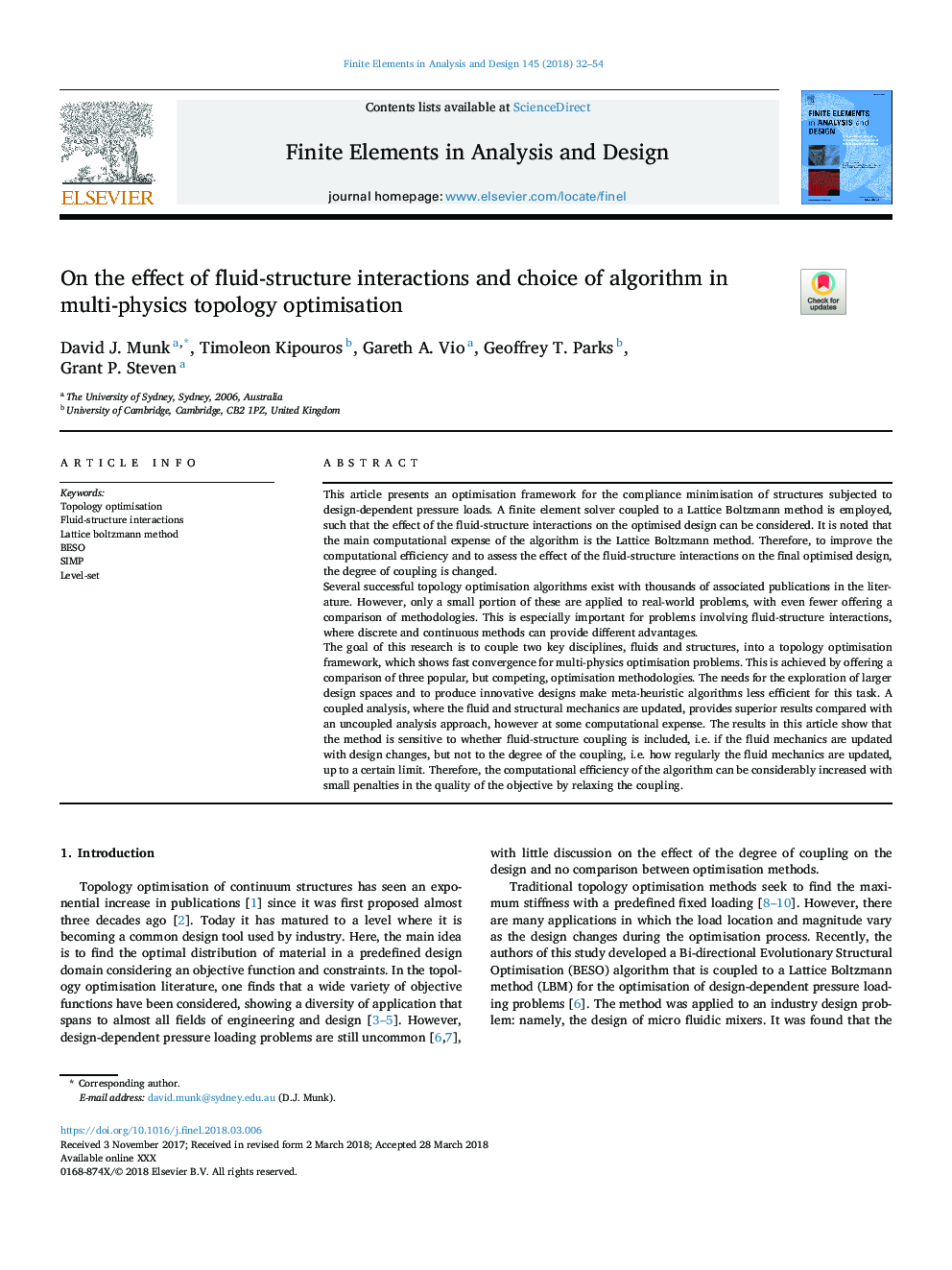| Article ID | Journal | Published Year | Pages | File Type |
|---|---|---|---|---|
| 6925326 | Finite Elements in Analysis and Design | 2018 | 23 Pages |
Abstract
The goal of this research is to couple two key disciplines, fluids and structures, into a topology optimisation framework, which shows fast convergence for multi-physics optimisation problems. This is achieved by offering a comparison of three popular, but competing, optimisation methodologies. The needs for the exploration of larger design spaces and to produce innovative designs make meta-heuristic algorithms less efficient for this task. A coupled analysis, where the fluid and structural mechanics are updated, provides superior results compared with an uncoupled analysis approach, however at some computational expense. The results in this article show that the method is sensitive to whether fluid-structure coupling is included, i.e. if the fluid mechanics are updated with design changes, but not to the degree of the coupling, i.e. how regularly the fluid mechanics are updated, up to a certain limit. Therefore, the computational efficiency of the algorithm can be considerably increased with small penalties in the quality of the objective by relaxing the coupling.
Related Topics
Physical Sciences and Engineering
Computer Science
Computer Science Applications
Authors
David J. Munk, Timoleon Kipouros, Gareth A. Vio, Geoffrey T. Parks, Grant P. Steven,
